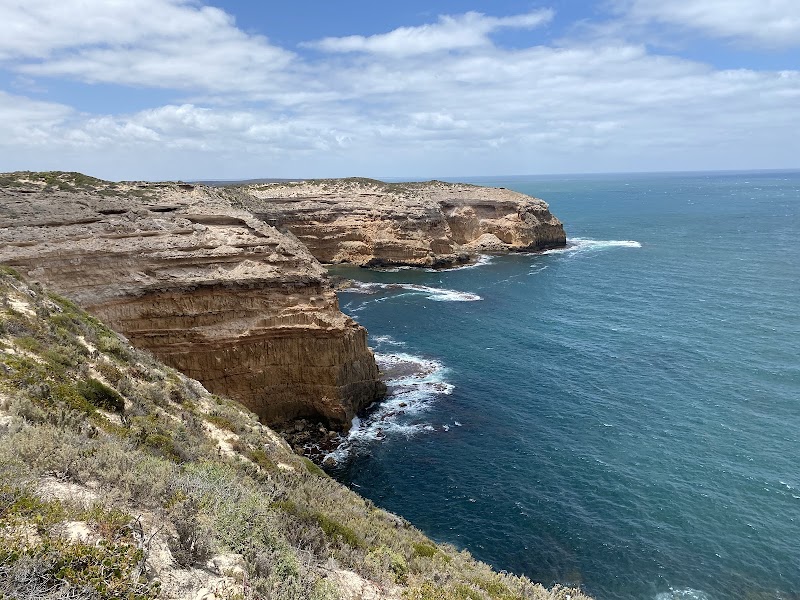
Kangaroo Island Wilderness Trail: A Practical Guide to South Australia’s Ultimate Multi-Day Trek
Experience the rugged beauty of Kangaroo Island’s Wilderness Trail, a four-day trek that threads through coastal cliffs, dense forests, and quiet campsites. This guide offers practical insights to help adventurers prepare for the island’s raw force and breathtaking views.
Hydrate Generously
Bring at least 3 liters of water per day; water sources on the trail are limited, and dehydration is a common risk especially in warmer months.
Footwear Matters
Wear sturdy boots with good grip to handle both sandy beach stretches and uneven rocky terrain comfortably and safely.
Plan Around Weather
Select late autumn to early spring for cooler temperatures and fewer insects; avoid summer heat spikes and heavy seasonal winds.
Lighten Your Load
Pack only essentials for camping; weight reduction improves endurance on the varied terrain and during elevation gains.
Kangaroo Island Wilderness Trail: A Practical Guide to South Australia’s Ultimate Multi-Day Trek
The Kangaroo Island Wilderness Trail offers a four-day, 61-kilometer trek that stretches across some of South Australia’s wildest terrain. This trail invites hikers to engage directly with raw landscapes — windswept coasts daring you to press onward, forests that murmur with ancient gum trees, and open fields where kangaroos pause in wide-eyed curiosity.
Starting at West Bay, the trail loops through five campsites, each positioned to capture the island’s shifting moods. Elevation gain is moderate but persistent, summing to around 700 meters, interspersed with sandy shoreline stretches and rugged dirt tracks. Terrain varies from coastal cliffs that demand firm footing to shaded forest paths softened by leaf litter. Expect your boots to earn their keep.
Each day offers a balance of challenge and reward. Early mornings carry cool breezes through dense eucalypts, while afternoons bring the sight and sound of waves clashing against granite boulders. Wildlife is ever-present — goannas slowly scuttle across your path, white-bellied sea eagles survey overhead, and if lucky, you might glimpse a rare glossy black cockatoo.
Planning is key. Hydration stations are sparse; carrying at least 3 liters of water daily is recommended. Campsites provide basic shelter but bring your own sleeping system. The island’s weather can shift quickly — pack versatile layers and waterproof protection. Sturdy, treaded boots will protect against sharp rocks and loose sand alike.
Timing your hike between late autumn and early spring means cooler, manageable temperatures and fewer flies. Summer can be unforgiving, with heat and humidity turning the trail into a test of endurance rather than exploration.
The trail respects the island’s fierce independence and fragile ecology; stay on paths, pack out all waste, and approach the land as a guest. With every step, you’re not conquering nature but moving alongside it.
Whether you’re a seasoned trekker or tackling a multi-day hike for the first time, the Kangaroo Island Wilderness Trail offers a paced, layered challenge coupled with panoramic views and immersive solitude. It’s a route best savored with attentive preparation and a steady heartbeat, thriving through rugged landscapes that refuse to be tamed.
Nearby Trips
All Adventures
Boat Charters
Water Activities
Adventures near Adelaide, South Australia
Discover the unique and memorable adventures that make Adelaide, South Australia special.
Frequently Asked Questions
Are there water sources along the trail?
Limited water sources exist; hikers must carry sufficient water as taps are only available at designated campsites. Filtering water from natural sources is risky due to contamination.
Is the trail suitable for beginners?
The trail’s moderate distance and terrain make it accessible to hikers with some prior experience, but newbies should prepare with shorter hikes and proper conditioning.
What wildlife might I see on the trail?
Expect frequent encounters with kangaroos, wallabies, glossy black cockatoos, sea eagles, and goannas; nocturnal animals appear near campsites after dark.
Are dogs allowed on the trail?
Pets are not permitted to protect the delicate local ecosystem and wildlife on Kangaroo Island Wilderness Trail.
How do I reach the trailhead from Adelaide?
Travel involves a 2-hour drive to Cape Jervis, followed by a ferry crossing to Kangaroo Island. From there, the trailhead at West Bay is accessible via shuttle or private transport.
Do I need a permit to hike the trail?
Yes, booking and permits through the official Kangaroo Island Wilderness Trail website are required to manage visitor impact and maintain infrastructure.
Recommended Gear
Hiking boots
Durable boots with solid ankle support and good grip provide protection across diverse surfaces from sand to rocks.
Hydration system
A hydration pack or water bottles ensuring at least 3 liters daily helps maintain hydration in often dry conditions.
Weatherproof jacket
Windproof and waterproof layers guard against coastal gusts and unpredictable rain, especially in cooler months.
Camping gear
Lightweight tent, sleeping bag, and mat suited to South Australia’s seasonal temperatures are necessary for overnight campsites.
Local Insights
Hidden Gems
- "Little Sahara sand dunes - a few kilometers inland offering a distinctive desert-like experience away from the coast."
- "Snellings Beach - a quiet coastal stretch with rugged boulders and secluded coves favored by local wildlife."
Wildlife
- "Kangaroo Island's unique population of rare Glossy Black Cockatoos feeding on sheoak trees."
- "Southern Brown Bandicoots often spotted at dawn or dusk around campsites."
History
"The island holds deep significance for the Ngarrindjeri people, with stories tied to the land’s features and native species. European settlement introduced sheep farming, but conservation efforts have refocused on preservation."
